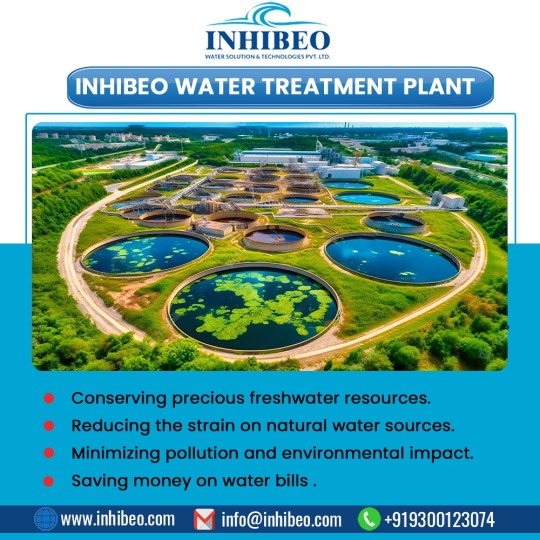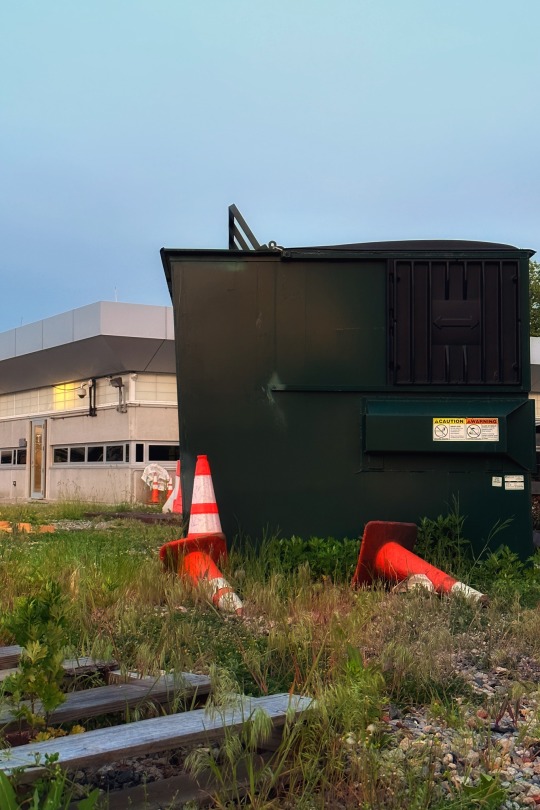#Industrial Wastewater Treatment Plant
Explore tagged Tumblr posts
Text

#Wastewater Treatment Processes#Water Treatment Plant Suppliers#Water and Wastewater Treatment Companies#Industrial Wastewater Treatment Plant
0 notes
Text
#effluent treatment plant#wastewater treatment#wastewater treatment plant#etp plant#etp plant manufacturers in delhi#etp plant manufacturers in mumbai#etp stp plant manufacturers in delhi#etp plant manufacturers in delhi ncr#etp manufacturers in delhi#etp plant in delhi#etp stp plant manufacturers in mumbai#wastewater treatment system#wastewater treatment companies#mobile wastewater treatment plant#wastewater treatment companies near me#industrial wastewater treatment systems#modular wastewater treatment plant#wastewater treatment facility#industrial wastewater treatment plant#small wastewater treatment plant#effluent treatment#etp water treatment#domestic wastewater treatment plant#common effluent treatment plant
0 notes
Text
Real-time access to all significant operational control points of your treatment assets and process

Wipro Water’s remote monitoring systems help lower risks and improve operations at water & wastewater treatment plants. We enable effective remote monitoring by leveraging technology we have developed to monitor plant performance in real time.
#industrial wastewater treatment technologies#industrial wastewater treatment#industrial wastewater treatment plant#industrial effluent treatment#industrial sewage treatment plant#industrial water and wastewater treatment#wastewater treatment process#industrial effluent treatment plant
0 notes
Text
The global Industrial Filtration Market is expected to reach USD 47.1billion by 2029 from USD 37.1 billion in 2024 at a CAGR of 4.9% during the forecast period according to a new report by MarketsandMarkets™. The rigorous environmental regulations imposed by governments worldwide require industries to adopt filtration solutions to mitigate pollution and ensure compliance. This regulatory pressure creates a universal demand for filtration technologies across various sectors.
#industrial#industrialization#energy industry#chemical industry#industrial filtration#industrial wastewater treatment#industrial filtration market#filtration#bag filter#filter press#energy#energia#power generation#water treatment plant#wastewatertreatment#wastewater treatment#waste management#zero waste
2 notes
·
View notes
Text










Poots
#the far field#susan5sigma#fivesigmaphoto#photography#nyc photography#nyc street photography#photographers on tumblr#on the streets#color photography#brooklyn#greenpoint#onthestreet#on the street#word on the street#beyond the streets#sunset#magic hour#newtown creek wastewater treatment plant#urban landscape#industrial#daily walk#sunset view#graffiti#fortune#have a seat#lost and found
14 notes
·
View notes
Text
CFE Services in Bangalore activities comply with environmental regulations from the outset. Gamata Biogreenery provides comprehensive CFE consulting services, guiding clients through the application process, documentation, and compliance requirements. Their expertise helps clients navigate the regulatory landscape efficiently, ensuring timely approvals and adherence to environmental norms.for more details visithere:https://theomnibuzz.com/effluenttreatmentplantetpdiffusers
#effluent treatment plant manufacturers#reverse osmosis plant suppliers in bangalore#industrial water treatment plant manufacturers#wastewater treatment companies in bangalore#organic waste converter suppliers in bangalore
0 notes
Text
An Introduction to Wastewater Treatment
Wastewater treatment is important to the conservation of the environment and the health of humans. Since industries, municipalities, and residential areas produce wastewater, it must be treated before being set free safely and returned to the environment or reused. In this blog article, we will learn what wastewater is, why it should be treated, the treatment stages, and the technology used in the process.
What Is Wastewater?
Wastewater is water that has been utilized for one or another industrial, commercial, or domestic purposes.
It may contain:
Municipal wastewater (sewage): This is due to the average daily household functions, including hand washing, toilets, and gutter and sink usage.
Industrial wastewater: Produced from industrial operations, it could be loaded with chemicals or certain materials depending on the industry's operations.
The two most important terms applied in wastewater treatment are influent (the wastewater entering the treatment) and effluent (the treated water exiting the treatment plant).
What is Wastewater Treatment?
Wastewater treatment is the removal of contaminants from wastewater to render it safe for release or for re-use. Wastewater treatment is targeted at removing contaminants such as suspended solids, organic matter, nutrients (e.g., nitrogen, phosphorus), and disease-causing microorganisms. It is a sequence of operations, typically divided into primary, secondary, and tertiary treatment, to purify the water to environmental levels.
Wastewater treatment ensures water quality, sustains human health, and averts the negative impact of wastewater on the environment. Wastewater treatment is also incorporated in water resource management as treated wastewater can be reused for irrigation, industry, or even drinking in some cases.
Why is it important to treat wastewater?
Well, there are several key reasons:
Environmental Protection: When untreated wastewater is dumped into our rivers and lakes, it can wreak havoc on ecosystems. The harmful substances found in wastewater—like chemicals, heavy metals, and pathogens—can endanger aquatic life, destroy natural habitats, and contaminate our drinking water. By treating wastewater, we help keep our water bodies healthy and capable of supporting a variety of life.
Public Health: Wastewater is a breeding ground for harmful microorganisms, pathogens, and toxins that can seriously threaten human health. If we don’t treat it, these contaminants can lead to diseases like cholera, dysentery, and other waterborne illnesses. Proper treatment makes sure that wastewater is safe and free from disease-causing agents before it’s released back into the environment or reused.
Water Conservation: Clean water is a limited resource. By treating wastewater, we can conserve fresh water and make it available for various uses, such as irrigation, industrial processes, or even drinking water after advanced treatment. This is a vital step toward sustainable water management, especially in areas where water is scarce.
Compliance with Regulations: Many places have strict rules about the quality of water that can be released into the environment. Treating wastewater helps industries, municipalities, and households meet these environmental standards, minimizing the risk of fines and legal issues.
Resource Recovery: Wastewater treatment can also help us recover valuable resources. For instance, treated wastewater can be reused for agricultural irrigation, industrial cooling, or even as drinking water after further treatment. Plus, by-products like sludge can be transformed into fertilizer or energy, reducing waste and promoting sustainability.
Why Treat Wastewater?
Treating wastewater is crucial for several important reasons:
Environmental Protection: Untreated wastewater, if released into natural bodies of water, can severely degrade ecosystems. The pollutants in wastewater, such as chemicals, heavy metals, and pathogens, can harm aquatic life, damage natural habitats, and pollute drinking water sources. By treating wastewater, we ensure that water bodies remain healthy and can support diverse life forms.
Public Health: Wastewater contains harmful microorganisms, pathogens, and toxins that can pose significant health risks to humans. If left untreated, these contaminants can spread diseases such as cholera, dysentery, and other waterborne illnesses. Proper treatment ensures that wastewater is free from disease-causing agents before being discharged into the environment or reused.
Water Conservation: Clean water is a finite resource. Treating wastewater helps conserve fresh water by allowing it to be reused for various purposes, including irrigation, industrial processes, or even as drinking water after advanced treatment. This contributes to sustainable water management, especially in regions facing water scarcity.
Compliance with Regulations: Many countries and regions have strict regulations on the quality of water that can be discharged into the environment. Wastewater treatment ensures that industries, municipalities, and households comply with environmental standards, reducing the risk of fines and legal consequences.
Resource Recovery: Wastewater treatment can also recover valuable resources. For example, treated wastewater can be used for agricultural irrigation, industrial cooling, or even potable water after additional treatment. Additionally, by-products like sludge can be repurposed for fertilizer or energy production, reducing waste and promoting sustainability.
Importance and Benefits of Wastewater Treatment
Wastewater treatment is a must for both protecting our surroundings and public health. Here's why:
Protecting the Environment: When raw wastewater is released into rivers, lakes, or oceans, it can destroy ecosystems and harm animals. The dangerous chemicals and harmful bacteria hiding in untreated wastewater have the potential to disrupt aquatic life and entire ecosystems.
Health Protection: Wastewater is usually a mixture of disease-causing microbes, heavy metals, and toxic chemicals. Drinking, bathing, or cooking with untreated water can cause severe health issues.
Resource Recovery: Positively, wastewater treatment allows us to recover useful resources such as nutrients, which can be recycled in agriculture.
Stages of Wastewater Treatment
Wastewater treatment generally occurs in three stages: primary, secondary, and tertiary treatment.
Primary Treatment
Primary treatment is the first step in cleaning wastewater. It involves the physical separation of large solids and debris from the water. Here's how it works:
Screening: Large particles like trash and debris are removed from the water through screening.
Grit Removal: Sand, gravel, and other heavy particles are separated from the water.
Sedimentation: The remaining solids, which can settle at the bottom of a sedimentation tank, are removed.
At this stage, most of the larger pollutants are taken out, but there are still dissolved and suspended contaminants in the water.
Secondary or Biological Treatment
The second stage, secondary treatment, focuses on removing the remaining organic pollutants from the water using biological processes. Here’s how it works:
Aeration: Wastewater is exposed to oxygen to encourage the growth of aerobic bacteria, which break down organic matter into simpler substances like carbon dioxide and water.
Clarification: After the aerobic bacteria consume the contaminants, the water is settled in a secondary clarifier to separate the remaining solids.
This stage dramatically reduces the amount of biodegradable organic matter in the water.
Tertiary Treatment
Tertiary treatment is the final polishing step, aimed at further purifying the water and making it suitable for discharge or reuse. It includes:
Filtration: Fine particles and contaminants that were not removed in earlier stages are filtered out.
Nutrient Removal: Nitrogen and phosphorus are often removed during this stage, as excessive amounts can harm aquatic life if released into the environment.
Disinfection: Disinfection methods like chlorination or ultraviolet light are used to kill any remaining bacteria and pathogens in the water.
At the end of this stage, the treated effluent is clean enough to be released back into the environment or potentially reused.
Wastewater Treatment Plants and Systems
Wastewater treatment plants (WWTPs) are designed to handle wastewater from residential, commercial, and industrial sources. Depending on local regulations, industrial wastewater may be treated in dedicated facilities separate from municipal sewage treatment works.
Centralized Facilities: Most municipal wastewater is treated at large, centralized treatment plants.
Septic Systems: In rural or less developed areas, septic systems are used to treat wastewater on-site before it is absorbed back into the soil.
The goal of all systems is to remove harmful contaminants and produce clean, treated water that can be safely released into the environment.
Advanced Technologies and Approaches
As environmental regulations become more stringent, wastewater treatment plants are upgrading to more advanced technologies. Some emerging methods include:
Integrated Fixed-Film Activated Sludge (IFAS): This process helps treat wastewater by enhancing the biological treatment stage.
Membrane Bioreactors: A cutting-edge method that combines biological treatment with membrane filtration, allowing for very fine filtration of water.
Sustainability: With a growing emphasis on environmental sustainability, wastewater treatment technologies now focus on minimizing energy use, reducing waste, and recovering resources like energy and nutrients.
Sludge Treatment and Management
Sludge is a byproduct of the wastewater treatment process. While it is rich in nutrients, it may also contain harmful pathogens and compounds. Treatment and management of sludge are essential to prevent it from becoming a public health hazard.
Sludge treatment processes aim to:
Reduce Pathogens: Sludge is treated to kill harmful microorganisms and make it safe for disposal or reuse.
Stabilize Organic Matter: The organic content of the sludge is broken down to reduce the potential for methane and carbon dioxide emissions.
Sludge can be turned into compost, used as fertilizer, or safely landfilled once it is properly treated.
Disinfection and Filtration
Disinfection and filtration are the final barriers to ensure that treated wastewater is safe before being discharged or reused. Some common disinfection methods include:
Ozonation: Using ozone to kill microorganisms and remove contaminants.
Chlorination: Adding chlorine to disinfect the water.
Ultraviolet (UV) Light: UV light effectively destroys bacteria and pathogens.
Filtration, on the other hand, uses various types of filters to remove remaining solid particles, ensuring that the water is clear and safe.
Wastewater Treatment Process
The entire wastewater treatment process is designed to remove pollutants, preserve resources, and ensure the safety of the environment and public health. Technologies used in the process vary based on the specific needs of the wastewater being treated, as well as local regulations and resources. Whether it's a simple municipal treatment plant or a high-tech industrial facility, all wastewater treatment systems aim to produce clean, reusable water.
Conclusion
Wastewater treatment is a complex and vital process that helps safeguard our water resources, protect ecosystems, and promote public health. With the advancement of technologies and approaches, wastewater treatment is becoming more efficient and sustainable. As communities and industries continue to generate wastewater, adopting effective treatment solutions will be crucial for building a cleaner, healthier future.
For more information or any queries, feel free to Contact Us!
#sewage water treatment#treatment of industrial waste water#Swimming pool water treatment#Disinfection of water#Sewage Treatment Plants#Disinfection of drinking water#sewage wastewater treatment#Surface Sanitation#wastewater treatment#Equipment Sanitation#sewage treatment#Air Fumigation#industrial waste water treatment#chlorine dioxide tablets#chlorine dioxide water purification tablets
0 notes
Text

Best Effluent Treatment Plant Consultant in India
Superweld Eco Solutions is a leading name among effluent treatment plant consultants in India. They offer expert guidance for efficient wastewater management. With innovative solutions, the company helps industries meet environmental regulations and optimize treatment processes. As trusted effluent treatment plant consultants, Superweld Eco Solutions ensures sustainable and cost-effective effluent treatment solutions across India. Visit the website for more information.
0 notes
Text
A3 Technocrafts: Leading Effluent Treatment Plant Manufacturers in India

Introduction
Industries generate large volumes of wastewater containing harmful pollutants that can pose serious environmental and health risks. To tackle this issue, effluent treatment plant manufacturers in India play a vital role in offering advanced solutions for wastewater treatment. A3 Technocrafts is a trusted name in the industry, providing customized, high-performance Effluent Treatment Plants (ETPs) for various sectors such as textiles, pharmaceuticals, food processing, and chemicals.
Importance of Effluent Treatment Plants (ETPs)
Effluent Treatment Plants (ETPs) are designed to remove contaminants from industrial wastewater before discharge or reuse. These plants help industries achieve regulatory compliance, reduce environmental impact, and promote sustainable water management.
Key Benefits of ETPs:
Pollutant Removal: Eliminates toxic substances, heavy metals, and organic waste.
Water Recycling: Treated water can be reused for industrial processes, reducing water consumption.
Regulatory Compliance: Ensures adherence to environmental laws and prevents legal issues.
Cost-Effective Solutions: Reduces water procurement and disposal costs.
A3 Technocrafts: Expert Effluent Treatment Plant Manufacturers in India
A3 Technocrafts specializes in designing and manufacturing state-of-the-art ETPs tailored to specific industrial needs. Our treatment plants integrate biological, chemical, and filtration processes to ensure maximum efficiency and compliance with environmental standards.
Why Choose A3 Technocrafts?
Customized ETP Solutions: Designed as per industry requirements for optimal performance.
Advanced Technology: Incorporates the latest biological and chemical treatment methods.
Energy Efficiency: Low power consumption ensures cost savings.
Durable & Low Maintenance: Built with high-quality materials for long-term reliability.
Eco-Friendly: Reduces wastewater discharge, protecting natural water bodies.
Industries We Serve
As one of the top effluent treatment plant manufacturers in India, A3 Technocrafts provides solutions for a wide range of industries, including:
Textiles: Treatment of dye and chemical-laden wastewater.
Pharmaceuticals: Removal of harmful pharmaceutical residues.
Food Processing: Management of organic waste and grease.
Chemical Industries: Neutralization and removal of toxic chemicals.
Advanced Treatment Processes in A3 Technocrafts ETPs
Our ETPs employ a combination of processes to ensure comprehensive wastewater treatment:
Pre-Treatment: Removal of large solids, oil, and grease.
Chemical Treatment: Coagulation, flocculation, and neutralization of contaminants.
Biological Treatment: Use of microorganisms to break down organic waste.
Filtration & Disinfection: Advanced filtration systems and UV/chemical disinfection for final purification.
Conclusion
Effluent treatment is essential for industries looking to manage wastewater responsibly and comply with environmental regulations. As a leading effluent treatment plant manufacturer in India, A3 Technocrafts offers innovative, cost-effective, and sustainable solutions tailored to industrial needs.
For expert consultation and customized effluent treatment solutions, contact A3 Technocrafts today!
Original Source:- https://a3tecnocrafts.blogspot.com/2025/03/a3-technocrafts-leading-effluent.html
#waste water treatment#zero liquid discharge plant#industrial wastewater management#effluent treatment plant manufacturer in India#effluent treatment plant
0 notes
Text
The Importance of a Reliable Wastewater Treatment Plant in Industrial Operations
A wastewater treatment facility is designed to remove contaminants from industrial or municipal wastewater before it is safely released back into the environment or reused. Industrial wastewater often contains pollutants such as heavy metals, oils, chemicals, and organic waste, which can be harmful if not treated properly.
0 notes
Text

Effluent Treatment Plant | Sustainable Industrial Wastewater Solutions Apex Ecotech provides sustainable industrial wastewater solutions, ensuring efficient effluent treatment for industries. Our advanced water treatment technologies help businesses achieve eco-friendly waste management, regulatory compliance, and resource conservation. With innovative processes, we ensure cleaner water discharge, promoting a greener future.
Learn more about our wastewater treatment solutions: www.apexecotech.com 🌍💧
#water treatment plant#water treatment solutions#industrial water treatment#sustainability#sustainableenergy#wastewater treatment
0 notes
Text
Effluent Treatment Plant in Dubai-Alkhabeerwt Discover advanced Effluent Treatment Plant in Dubai and reliable Reverse Osmosis supplier in Saudi Arabia for sustainable water solutions. We specialize in industrial wastewater in UAE and comprehensive wastewater treatment in UAE, ensuring eco-friendly practices and regulatory compliance. From treatment plants to RO systems, we deliver innovative solutions for industries across the UAE and Saudi Arabia. Contact us today! https://www.alkhabeerwt.com/effluent-treatment-plant.html

#Industrial wastewater in UAE#Wastewater treatment in UAE#Effluent Treatment Plant in Dubai#Reverse Osmosis supplier in Saudi Arabia
0 notes
Text
#effluent treatment plant#wastewater treatment#wastewater treatment plant#etp plant#etp plant manufacturers in delhi#etp plant manufacturers in mumbai#etp stp plant manufacturers in delhi#etp plant manufacturers in delhi ncr#etp manufacturers in delhi#etp plant in delhi#etp stp plant manufacturers in mumbai#wastewater treatment system#wastewater treatment companies#mobile wastewater treatment plant#wastewater treatment companies near me#industrial wastewater treatment systems#modular wastewater treatment plant#wastewater treatment facility#industrial wastewater treatment plant#small wastewater treatment plant#effluent treatment#etp water treatment#domestic wastewater treatment plant#common effluent treatment plant
0 notes
Text
Industrial Effluent Treatment Plant Solutions | Wipro Water
Industrial Effluent treatment plant (ETP) is a facility to remove different types of wastewater contamination in Industries, such as solids, oil, grease, biodegradable organics, toxic materials, acids, and alkalies.
#wastewater treatment process#industrial wastewater treatment plant#industrial wastewater treatment#industrial effluent management#industrial effluent treatment#industrial waste water management
0 notes
Text
How Plant Growth Promoters Help in Stress Resistance and Growth
In agriculture, plants often face various types of stress, including drought, high salinity, extreme temperatures, and pest attacks. These stressors can significantly hinder growth, reduce yields, and lead to poor crop quality. Plant Growth Promoters (PGPs) have become essential tools to help plants overcome these challenges. Through natural or synthesized compounds, PGPs not only promote growth but also improve plants' resilience to environmental stressors. This article explores how plant growth promoters help in building stress resistance and fostering robust growth in crops.

1. Enhancing Root Development for Better Water and Nutrient Absorption
Why It Matters: Strong root systems are critical for plants to access water and nutrients, especially during drought or nutrient-poor conditions.
How PGPs Help: Auxins and other root-stimulating PGPs encourage extensive root growth and branching. This allows plants to absorb more water and nutrients from deeper soil layers, enhancing their ability to withstand drought and nutrient deficiencies. Strong roots form a resilient foundation for plants to thrive, even in suboptimal conditions.
2. Boosting Photosynthesis Efficiency
Why It Matters: Photosynthesis is vital for plant growth and productivity. Stress can reduce a plant's ability to produce energy, leading to stunted growth.
How PGPs Help: Certain PGPs, such as amino acids and cytokinins, improve chlorophyll production and leaf area expansion, boosting photosynthetic efficiency. By enhancing chlorophyll synthesis, PGPs increase plants’ energy production capacity, helping them maintain growth and vigor under stressful conditions.
3. Improving Water Retention and Reducing Drought Sensitivity
Why It Matters: Water scarcity can rapidly weaken crops, particularly in arid and semi-arid regions.
How PGPs Help: Some PGPs, such as humic and fulvic acids, enhance soil structure and increase water retention around plant roots. This moisture retention capacity helps plants stay hydrated longer during dry periods, reducing the negative effects of drought. Additionally, compounds like proline in amino acid-based PGPs help plants maintain cellular hydration and reduce wilting.
4. Strengthening Cell Walls and Physical Defense Mechanisms
Why It Matters: Stronger cell walls offer physical resistance to stress, reducing damage from pathogens, pests, and environmental factors.
How PGPs Help: PGPs like potassium-based promoters and amino acids aid in reinforcing cell walls, making plants more resilient to physical stress and pest attacks. By enhancing the plant's cellular structure, these promoters create a stronger physical barrier, reducing vulnerability to external damage and supporting overall plant health.
5. Enhancing Antioxidant Production for Stress Protection
Why It Matters: Environmental stresses can increase the production of harmful reactive oxygen species (ROS) in plants, causing cellular damage and reducing growth.
How PGPs Help: Certain PGPs stimulate the production of antioxidants in plants, which neutralize ROS and prevent oxidative damage. Seaweed extracts, in particular, are known to boost antioxidant activity, protecting plants from the harmful effects of oxidative stress. This defense mechanism is crucial in helping plants survive adverse environmental conditions.
6. Regulating Growth Hormones for Optimal Growth and Stress Tolerance
Why It Matters: Balancing growth and stress tolerance is essential for healthy plant development.
How PGPs Help: PGPs contain or stimulate the production of plant hormones like auxins, cytokinins, and gibberellins, which regulate growth and help plants adapt to stress. For instance, cytokinins promote cell division and delay aging, allowing plants to maintain vigor during stress. Auxins encourage root growth and resilience, while gibberellins promote stem elongation and flowering. These hormones help plants prioritize growth while adjusting to stressful conditions.
7. Enhancing Nutrient Absorption and Soil Interaction
Why It Matters: Nutrient uptake is often limited in poor soils, high-salinity soils, or soils affected by drought.
How PGPs Help: Microbial-based PGPs like mycorrhizal fungi and rhizobacteria improve nutrient absorption by forming symbiotic relationships with plant roots. They assist in breaking down complex nutrients in the soil and making them available to plants. Humic acids also enhance nutrient solubility, allowing plants to absorb essential minerals more efficiently, even in nutrient-depleted soils.
8. Supporting Resilience to Salinity Stress
Why It Matters: Salinity stress, common in coastal and arid regions, disrupts nutrient absorption and causes ion imbalance in plants.
How PGPs Help: Amino acids and other compounds in PGPs help regulate ion balance and osmotic pressure within plant cells, reducing the toxic effects of excess salts. These promoters encourage the uptake of beneficial ions, which helps in maintaining cellular function and nutrient transport, even in saline conditions.
9. Reducing Plant Senescence for Extended Growth Periods
Why It Matters: Early aging or senescence reduces a plant’s productive lifespan, limiting growth and yield.
How PGPs Help: Cytokinins in PGPs delay aging by maintaining cell division and protein synthesis. This keeps plants actively growing for a longer period, allowing them to reach maturity and produce higher yields. By delaying senescence, PGPs help plants better manage stress without prematurely sacrificing productivity.
10. Inducing Systemic Acquired Resistance (SAR) for Disease Protection
Why It Matters: Disease outbreaks can devastate crops and reduce yields.
How PGPs Help: Certain PGPs activate the plant’s immune response, a process known as Systemic Acquired Resistance (SAR). SAR prepares the plant to defend against pathogens, making it more resilient to infections. Microbial-based PGPs such as Bacillus species can induce SAR, helping plants resist bacterial, fungal, and viral diseases.
Conclusion
Plant Growth Promoters play a vital role in modern agriculture by helping crops withstand environmental stressors and achieve robust growth. From enhancing root structure and nutrient uptake to improving stress tolerance and disease resistance, PGPs offer multiple benefits that help farmers grow healthier, more resilient plants. In an era of changing climate and increasing demand for sustainable agriculture, PGPs are indispensable tools for ensuring crop health, productivity, and sustainability. By integrating plant growth promoters into regular crop management practices, farmers can protect their crops from stress and maximize their yields in an eco-friendly way.
0 notes
Text

A1 Aquaculture Air Blowers...👇
Reliable and Efficient Air Blower Solutions and Services with 2 Years Warranty and Life Time Free Inspection!
#airblowersinchennai#industrial air blower#manufactring company#sludgedewatring#vacuum pumps#airblower#delhi#sewage treatment plant manufacturer#waste water#a1blowers#airbloc spare parts#sewage treatment plant#wastewatertreatment#wastewater#effluenttreatment#industrial#waterexpo#water treatment plant#watertreatment#chennai#bengaluru#tamilnadu#jharkhandnews
1 note
·
View note